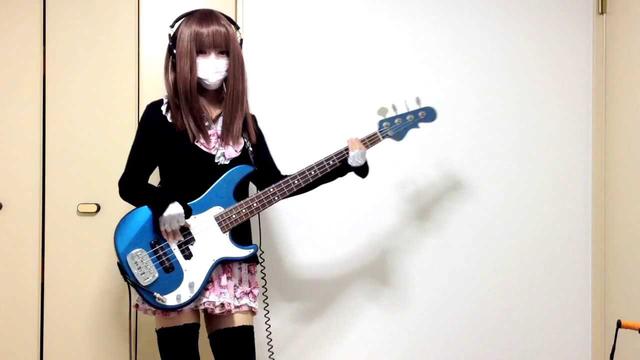technique - What is the definition of 'playing in the pocket ...
TL;DR Leaving few details out, I'd define it as multiple overlapping swings with beat/accents that all instruments lock into (rhythm-responsible instruments should keep sync most frequently & accurately). The overall feel can be varied by offsetting each instruments timing (playing bit ahead the 'beat/accent' or behind). In improvisation if other players perceive a feel change and then change what they do it can cause a chaos as everyone adjusts what they do - perhaps one player changed feel for syncopation-like effect - if everyone in band changes in response the desired effect falls apart. Some coordination/agreement/leading is thus needed for improvisation if one likes doing such tricks.
Found this recent book because it referred a paper where academics clearly had recognized one part of the "pocket". (it's not just "band playing in sync". You can get things play in sync in a computer sequencer and it won't be the pocket that people in know talk about - in my dictionary pocket is something that gets atleast some people (*NFP is probably "dancer personality") moving to the music. Otherwise you could say all electronic music is "in the pocket" - I used to do electronic music and to get the pocket I had to find optimal tempo and adjust swings and shuffles for drums first and then play to those)
http://www.amazon.com/Expressiveness-music-performance-Empirical-approaches/dp/0199659648
This is the paper.http://www.speech.kth.se/prod/publications/files/822.pdf
It focuses on adjustment that musically talented players do to their swing in relation to large changes in tempo. One explanation for this is that as the tempo changes enough, the time slice in which invidual note timing swings (shifts around a midpoint) changes in length. Instruments (ADSR) envelope may not be easily changeable (without effects rack) causing the need to adjust your playing so the feel of the swing remains noticeable.
The drums (how long their sound sustains) or whatever rhythm instrument that is most in focus determines the optimal tempo through the notes envelope and overlap. Faster tempo requires reducing sustain/release time, faster attacks in order to avoid the sounds getting so overlapped that the feel is lost.
Swing (this is what creates the "feel" or urge to dance, the "pocket" is when all players are able to play around the swing - all feeling the swing) :
Study of some computer-tracked songs that clearly groove highlighted that the song under study didn't actually have an instrument based swing parameter. Instead the composer was rapidly alternating entire project between two tempos.
After lot of listening I conclude that the most skilled compositions may actually have multiple simultaneous swings of different frequency.
Swing opportunities:
1) "dialogue" - compose the track in a manner where a variation of same theme is played twice with some modifications (vary the arpeggio, instrument etc) - in particular, tempo. So part of the song is in a different tempo. Typical in classical music. This won't create a pocket, just a "dialogue" between instruments. Perhaps one part/instrument is upbeat and then followed by another more slower and melancholic feel.

2) traditional easy to play swing: When you have your optimal tempo figured out, don't play at that tempo but actually play at say -2% and +2% BPM around it, smoothly alternating the tempo between each half interval (8 beats).
3) dance music swing: have the notes swing also (achieved eg. by the rapid tempo variation explained or instrument specific swing parameter)
All of this maybe achieved in electronic music by LFO's and clock dividers as seen here (see 11m20s - 12m00s):
Is 3) actually called a shuffle? IMO shuffle is a combination of #2 interval swing and #3 note-swing, accents + ghost notes. That's atleast what I hear going on if I listen to the best of the best (search "Jeff Porcano instructional" in youtube) when they demonstrate shuffle on drums. You could say shuffle is just part of that but then you'd not have the feel needed for pocket.
To get single instrument to really sound 'talented' you also need to play some notes legato, vary velocity, tweak sustain/release, accents while doing those alternations in tempo and swinging the notes.
If there is some genetic talent involved in swing, it's IMHO about the ability to listen to music and if you can't resist nodding your head, tapping your feet etc, then you have that genetic talent. To turn it to playing or composition skill, you also need trait of perfectionism - this allows noticing what sounds like a bad mistake and what sounds like good mistake worth pursuing. The happy accidents I do always are like "wow!" and then I'm sad when I can't repeat it immediately but have to practise a particular riff for 1-4 hours to get it just like the accident was. The more experience the shorter this practise time becomes. But since we are talking about some millisecond differences between perfect and not perfect in terms of how I feel the timing, that's why it takes lot of practise.
I leave you with a song for testing whether you have the (what I assume to be) genetic trait of feeling the pocket. I am very sensitive to "perfect pocket" so if the timing is even a little bit off then I don't start dancing to it but rather I start frowning or mute/switch song. That's the perfectionism talking that allowed me to simply through introspective feeling to reverse engineer what elements make up professional playing.
Same song, same player, both groove but one of these is more perfect in pocket-terms than other. In the spoiler below I speculate why I think the player decided to remove the other performance from their channel. (it's re-up by someone else)
it's the second link that's more in pocket - the first one has lots of notes played late. Maybe by couple milliseconds on average. It's likely the player felt a more laidback feel suited the song but as that is extremely difficult to achieve in such busy song didn't quite get it as perfectly as the more "tighter" version in 2nd link - to get it not only you have to perfectly delay the attack but also modify the envelope of the sound because if you don't, it will sound like the notes get cut prematurely. This time between the note cutting and next note starting gets shorter with faster tempo so as that happens, using some sound processing effects can help in achieving the feel desired.
EDIT: Very interesting note about the video, I noticed the player loses the pocket (sounds like computer sequencer/mediocre player) when (s)he stops dancing around the beat. I have noticed this phenomenom myself too, if I am rigid I lose track of the #2 swing more easily and in order to do note-swing I also have to use my mouth to spell (silent vocalization of the notes) out the timing envelopes to get that millisecond timing right. I learned this technique from youtube video talking about how jazz players train.
Example of how effects processors can be used to modify the feel in significant way:
Here's the Jeff Porcano video mentioned. It goes into specifics of the note level swing & shuffle.
-
Latest
 Shirase Kobuchizawa | A Place Further than the Universe Wiki ...
Shirase Kobuchizawa | A Place Further than the Universe Wiki ...Shirase KobuchizawaRōmajiKobuchizawa ShiraseShirase Kobuchizawa (小淵沢 報瀬 Kobuchizawa Shirase) is one of the main characters in A Place Further Than the Universe.Appearance[]Shirase is a...
-
Next
 No Game No Life: Will Season 2 Ever Happen? | CBR
No Game No Life: Will Season 2 Ever Happen? | CBRNo Game No Life: Will There Ever Be a Season 2?The reason No Game No Life only has a single anime season has nothing to do with its widespread popularity. Will it ever continue with a second?A big hit...
Popular Articles
- Rocket Power (TV Series 1999–2004) - Rocket Power (TV Series ...
- technique - What is the definition of 'playing in the pocket ...
- "Pocket rockets," in poker Crossword Clue Answers, Crossword ...
- 5 Sex Toys Every Man Should Own, Use & Use Again - LA Weekly
- Pocket Holsters: 11 Options For Easy Everyday Carry (2021 ...
- What is Elton John's most successful song? (Celebrity Exclusive)
